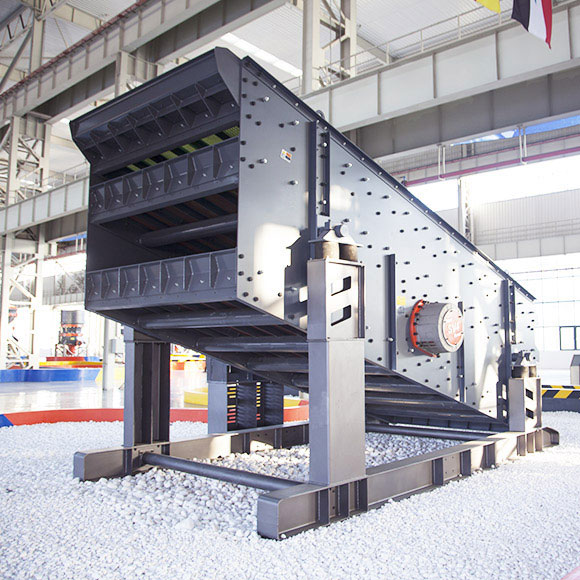A vibrating screen for sand and gravel aggregate is a crucial component in the construction and mining industries. It plays a key role in the processing of raw materials, separating them into various sizes for further use. The efficiency and effectiveness of a vibrating screen significantly impact the quality of the final product and the overall production process.
Purpose of Vibrating Screen:
The primary purpose of a vibrating screen in the sand and gravel aggregate industry is to separate materials based on their size. This separation is essential for the production of uniform and high-quality aggregates used in construction projects. The vibrating screen helps in classifying the raw materials into different categories, allowing for the production of specific aggregate sizes.

Design and Structure:
Vibrating screens used in this industry are typically designed with multiple decks or layers. Each deck consists of screen panels with different-sized openings, allowing the separation of materials into various grades. The screen may be inclined, horizontal, or circular, depending on the application and specific requirements.
The vibrating screen is mounted on a robust frame and is driven by a vibrating motor or motors. The vibration motion promotes the movement of materials on the screen, ensuring efficient separation. The design also considers factors such as material flow, screen inclination, and the type of screening media used.
Screening Media:
The choice of screening media is crucial for the performance of a vibrating screen. Commonly used screening media include woven wire mesh, polyurethane, rubber, and perforated plate. The selection depends on factors such as the type of material being processed, desired product specifications, and wear resistance requirements.
Efficiency and Throughput:
Efficiency is a critical factor in the design and operation of vibrating screens. An efficient vibrating screen should have high throughput capacity, ensuring that a large volume of material can be processed in a relatively short time. This is essential for meeting production demands and maintaining cost-effective operations.
Maintenance and Durability:
Regular maintenance is essential to ensure the longevity and optimal performance of a vibrating screen. Components such as bearings, springs, and screening media should be inspected and replaced as needed. Proper maintenance practices contribute to reduced downtime and increased overall equipment lifespan.
Application in Aggregate Production:
In the production of sand and gravel aggregates, the vibrating screen is typically used after the initial crushing stage. The crushed material is fed onto the vibrating screen, where it is separated into different sizes based on the configuration of the screen decks. The resulting graded materials can then be used for various construction purposes, such as concrete production, road construction, and building projects.
A vibrating screen is a fundamental component in the sand and gravel aggregate industry, facilitating the efficient separation of materials based on size. The proper design, selection of screening media, and regular maintenance are essential for achieving high efficiency, throughput, and product quality. As the construction and mining industries continue to grow, the demand for reliable and high-performance vibrating screens will remain crucial for the production of quality aggregates.
